When the famous management consultant Peter Drucker said “You can’t manage what you don’t measure” he omitted an important element. You need to know what to measure. It may seem obvious but, too often, businesses measure what’s easy rather than what’s valuable. Asset management software helps you identify what’s valuable in your business so you can ensure that you are focussing on things that are important.
Asset management software lets you easily record and track all the details pertaining to your assets. But more than just a simple database, asset management software is a powerful tool that allows you to manage the performance of an asset from the moment you purchase it through to the time it is decommissioned or disposed of.
Where are you spending your time?
There’s one asset your business can’t make or buy – time. Asset management software, that works with your field service systems, makes it easy to understand which assets require the most maintenance effort and whether there are recurring issues where the root cause, rather than the symptoms, is not being addressed.
That repeating downtime is costing you the time of your technicians and experts, downtime as the asset is repaired, and maybe causing frustration to your customers.
Knowing an asset’s history in an instant
When a field technician arrives on site, they need to have the most up to date information to do their job as efficiently and effectively as possible. By ensuring every piece of equipment is tagged with a barcode or QR code that links to its record in your asset management system, the technician can scan the code and receive current information the equipment’s history, current state, and other pertinent information.
Do you know what you have?
Some assets are easy to identify. There will be a paper trail that starts with a purchase order and invoice and ends with a record in your general ledger. But that might only be part of the story. What about assets that are procured outside official channels? So-called ‘zombie assets’ and ‘ghost assets’ that are in the general ledger but can’t be identified or are physically present but not in the ledger represent risk to your business.
A well-maintained asset management system that facilitates audits so you can identify previously unknown or lost assets can ensure you fully understand what assets you have where they are, and their operating state. This lets your business identify all assets, ensure your insurance policies are accurate and ensures you can manage data breach and other potential risks.
Identify redundant assets
As well as allowing you to better understand an asset’s lifecycle from cradle to grave, your asset management system can identify unused assets. Whether that’s a PC sitting in a cupboard or a spare air-conditioner that’s no longer used as your HVAC system is fully operational, your asset management system can help you find those un-needed assets so they can be correctly accounted for and disposed of.
Increase collaboration and reduce human error
Successful business operations are a team effort. Great teams deliver brilliant results when they can easily share information and collaborate. Asset management software allows everyone from the accounts team through to sales and field service technicians to see the same data, make edits that are tracked as new information comes to light, and make decisions from a common source of truth.
And, as an asset management system provides structure for that information, there’s less chance of errors such as entering data in the wrong cell in a spreadsheet or putting the wrong data type in a field.
Asset management software gives a business the tools it needs to record, store and share information that enables everyone in the business to know what assets they have and to manage them more efficiently and effectively.
